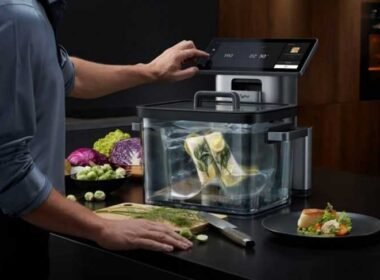Sustainability isn’t just a buzzword anymore, but it’s a necessity. For small and growing businesses it also helps to impress customers, cut waste, and stay competitive in an increasingly sustainably conscious environment.
More consumers are now actively choosing to shop with brands that demonstrate eco-conscious values, and how you send your packages is a big part of that picture.
But becoming more eco-friendly doesn’t mean blowing the budget out of the water. In fact, some green choices can lead to smarter operations and more money left over for your savings account. Here are five meaningful, realistic ways your business can be more eco-friendly when sending packages, without sacrificing quality or customer satisfaction.
1. Switch to recycled or recyclable packaging
Start with the basics. Traditional plastic-based packaging is still widely used, but switching to eco-friendly packaging alternatives can make a big difference.
Instead of plastic mailers or Styrofoam peanuts, opt for:
- Recycled cardboard boxes: These are widely accepted in household recycling bins.
- Paper mailers: These can be padded or plain, and generally fully compostable.
- Paper tape instead of plastic: which can be recycled along with the box.
- Paper wrap packaging: Which is recyclable.
Switching to these doesn’t mean compromising on protection either, your products will still arrive safely as these products are designed to do their job effectively.
An important step here is to inform your customers about the ability to recycle the packaging. A simple printed message on the box or an insert can encourage recycling or reuse, and reinforce your brand’s sustainable values.
Similarly, using social media marketing to promote the changes and updated packaging can have a positive impact on customer satisfaction.
2. Reduce package size and weight
Oversized packaging not only wastes materials, but it also increases your postage costs and your carbon footprint. Reducing the size and weight of your parcels is one of the easiest and most cost-effective ways to go greener.
This doesn’t mean under-protecting your goods, but instead it’s about choosing the right-sizing and only choosing boxes or mailers that are proportionate to the item being sent.
Less empty space means less void fill is needed, and your packages take up less room during transport, which means fewer emissions per parcel.
It also helps to have a clean, efficient packing area that supports speed and organisation. Using robust, easy-to-clean hygienic wall cladding can help maintain a tidy packing space, reducing the need for constant maintenance and throwaway materials like repainting or reboarding. Durable environments = longer-term sustainability.
3. Buy in bulk
Eco-friendly packaging often seems more expensive at a glance, but buying in larger quantities can reduce the cost per item significantly and lower the number of deliveries you need from suppliers, which is better for the environment.
When you order:
- Plan ahead and buy in bulk where it makes sense.
- Choose suppliers who offer carbon-neutral or low-emission delivery options.
- Store packaging properly so it doesn’t get damaged or go to waste.
4. Encourage customers to reuse packaging
Reusable packaging is becoming more popular, especially among indie and artisan brands. Think outside the box: Can your packaging be reused for storage, gifting, or returns?
For example:
- Use sturdy boxes that customers can reuse at home.
- Choose attractive tissue or wrapping that people are likely to keep.
- Avoid branding the exterior too heavily so it’s suitable for reuse.
- You can even include a fun note that encourages reuse: “Reuse this box for your next return or regifting”.
Some businesses go one step further and reward sustainable behaviour. Think discounts for returning packaging, loyalty points for reuse, or giveaways in exchange for tagging your brand when repurposing packaging on social media. This builds community and positions you as a brand that truly cares.
5. Track your packaging as an investment
One of the biggest mindset shifts for small businesses is to stop seeing packaging purely as an expense, and start treating it as an investment.
For example, eco-friendly packaging can:
- Reduce breakage rates and return costs.
- Improve the unboxing experience, leading to more reviews and referrals.
- Boost loyalty among eco-conscious shoppers.
- Reduce waste management and storage costs.
If you monitor these areas regularly: returns, complaints, storage issues, postage costs, you’ll likely find areas where you can save or streamline. Those improvements can mean more consistent profit margins and more to funnel into your savings account, future-proofing your business.
To conclude, going green with your packaging doesn’t mean overhauling everything at once or compromising your customer experience. By making small but deliberate changes, you can build a more sustainable business without breaking the bank.










